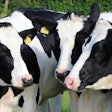Global animal health company Ceva Santé Animale held the inauguration ceremony of its new European vaccine production facility. A further 3,900 square meters of space, containing more than 100 pieces of new equipment, were added to the existing campus at a cost of EUR25 million (US$28.6 million), creating 60 new jobs.
Dr. Marc Prikazsky, Ceva’s chairman and CEO; Thierry Le Flohic, director of Ceva’s Biology Unit, Dr. István Nagy, parliamentary state secretary and deputy minister, Ministry of Agriculture; and Arnaud Zerkovitz, director of the Commercial Office of the French Embassy; all addressed the event.
Ceva Phylaxia has a long history in Hungary, having been present for more than100 years. Today, the campus lies at the center of a global vaccine network with Budapest being the single largest R&D and production center. Over 95% of current production is exported to countries around the world.
“We are very proud of Hungary’s long, innovative tradition in the research and production of veterinary vaccines. Many of the scientists associated with Ceva Phylaxia such as, Marek and Aujeszky have had their names immortalized as commonly found production animal diseases, but today, more than ever, innovation must have impact. Since 2000, We have gained over 2,000 new global marketing authorizations, resulting in a 20x increase in production on the site. In turn, this has created over 300 new positions” said Thierry Le Flohic. “Although we take pride in our history, we are investing in Hungary for the future. Our teams here have demonstrated their ability to turn innovation into exponential growth”
The newly developed robotized production lines use all the latest technology. Antigen production capacity has doubled, and 2 separate laboratories dedicated to inactivated antigen production have also been added.
Full Circle of Innovation
Ceva Phylaxia’s recent growth has largely been driven by the production of poultry vaccines but at the end of 2016, Ceva acquired a number of key swine vaccines, Circovac being the best known. The company will relocate production of these vaccines to the new facility over the next 2 years, bringing swine production back to the center of a plant that in 1912, began as the Phylaxia Serum Producing Company, producing the first vaccine against classical swine fever. Part of the new production facility will also be dedicated to producing new technology vaccines used in poultry hatcheries. These vaccines use a virus strain named named after József Marek, a veterinary scientist who worked at Phylaxia, ensuring that his innovation will continue to have impact through the billions of doses of vaccine that will be produced in the new facility and used by poultry producers throughout the world.
“Innovation is more than ever before the key to success. But in an increasingly competitive world, with customers constantly asking for improved efficacy and quality, innovation is also more and more complex and expensive to deliver. As a result, individual scientists or even campuses like Budapest are unlikely to succeed alone,” said Prikazsky.
Our team here have delivered exceptional results but as part of a global network that brings together skills from the USA, Canada, Japan, China and Brazil. I am very proud of what they have all achieved, together."

















